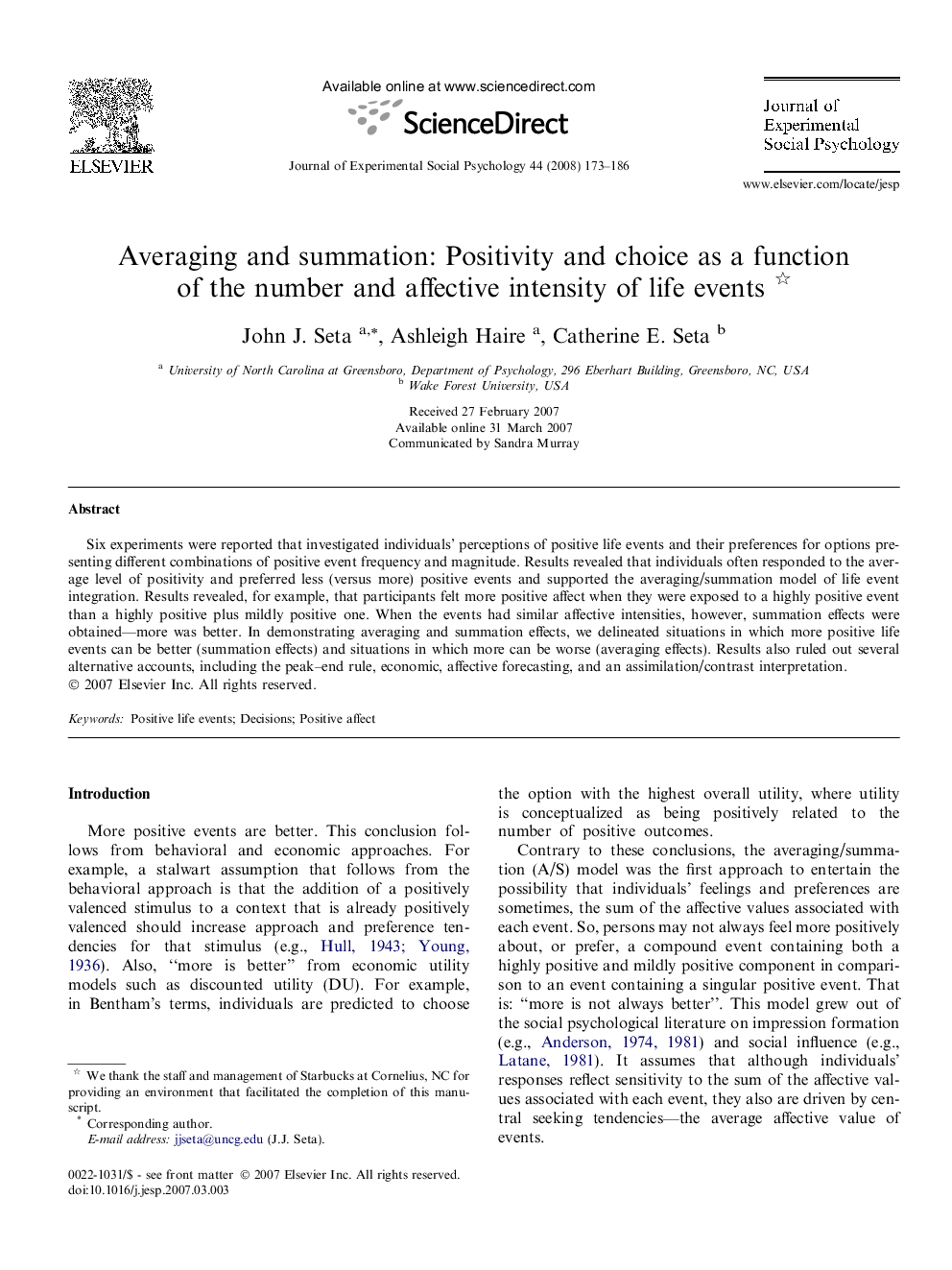| Article ID | Journal | Published Year | Pages | File Type |
|---|---|---|---|---|
| 948531 | Journal of Experimental Social Psychology | 2008 | 14 Pages |
Six experiments were reported that investigated individuals’ perceptions of positive life events and their preferences for options presenting different combinations of positive event frequency and magnitude. Results revealed that individuals often responded to the average level of positivity and preferred less (versus more) positive events and supported the averaging/summation model of life event integration. Results revealed, for example, that participants felt more positive affect when they were exposed to a highly positive event than a highly positive plus mildly positive one. When the events had similar affective intensities, however, summation effects were obtained—more was better. In demonstrating averaging and summation effects, we delineated situations in which more positive life events can be better (summation effects) and situations in which more can be worse (averaging effects). Results also ruled out several alternative accounts, including the peak–end rule, economic, affective forecasting, and an assimilation/contrast interpretation.
